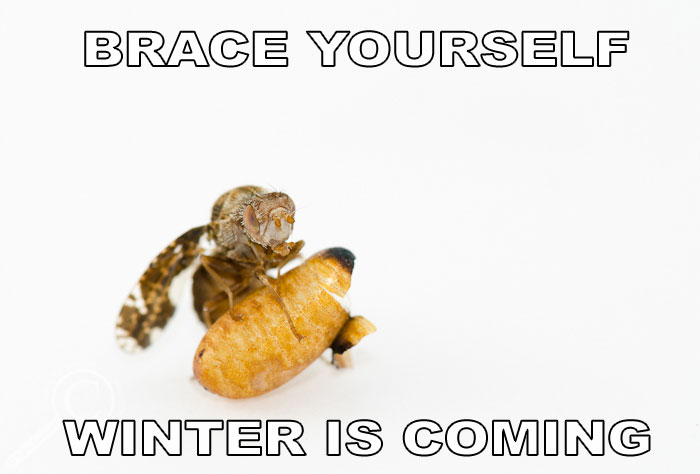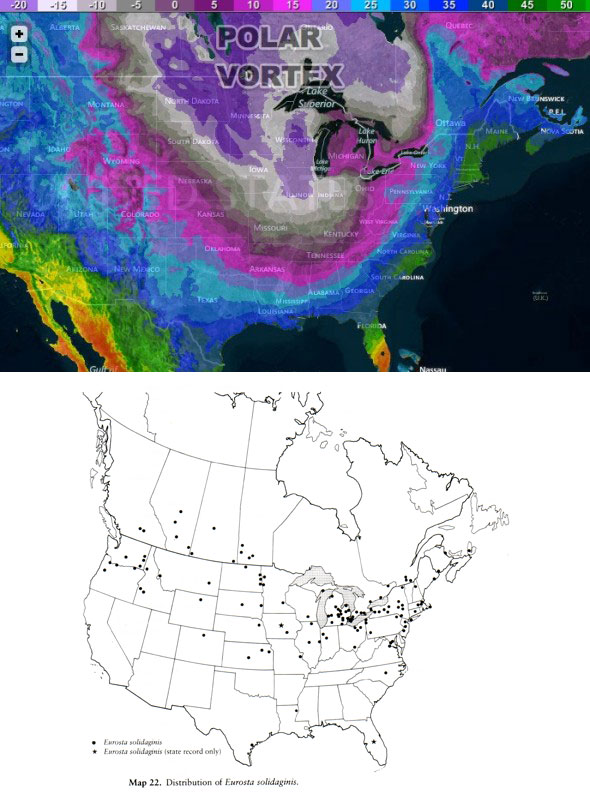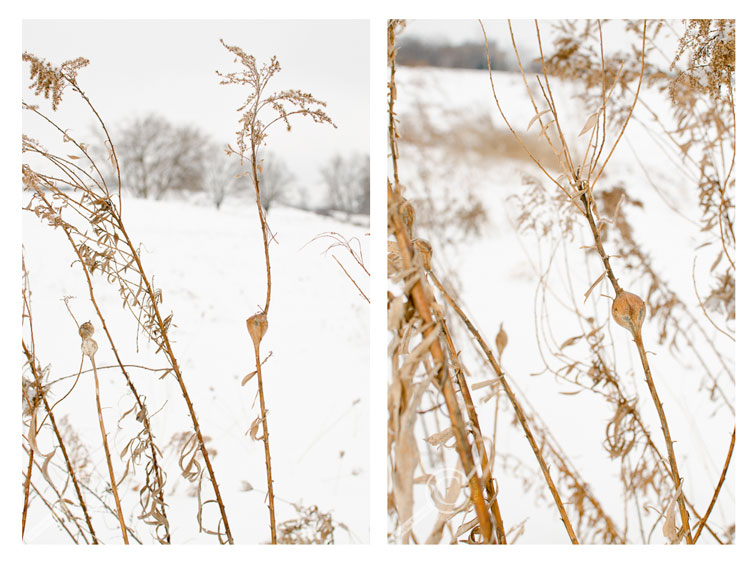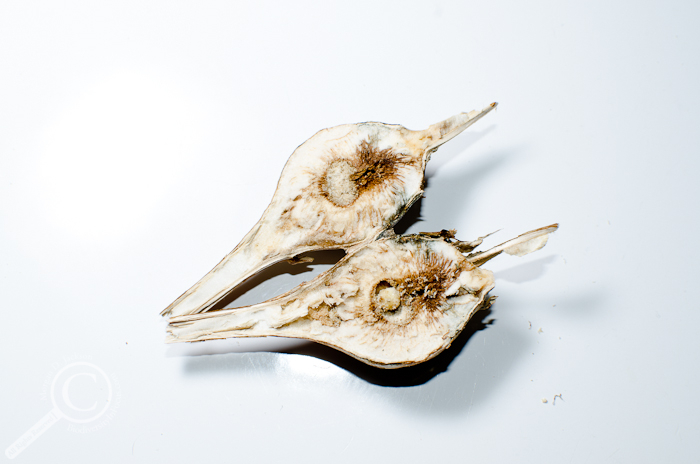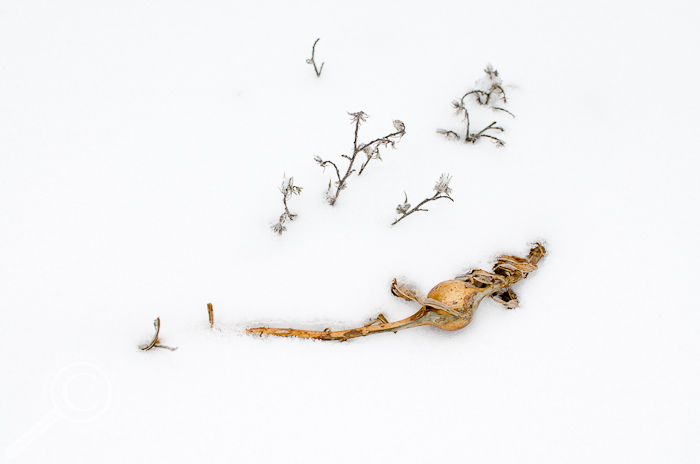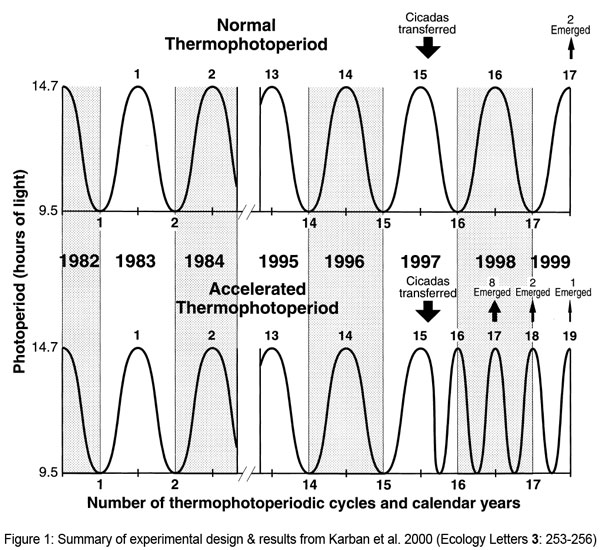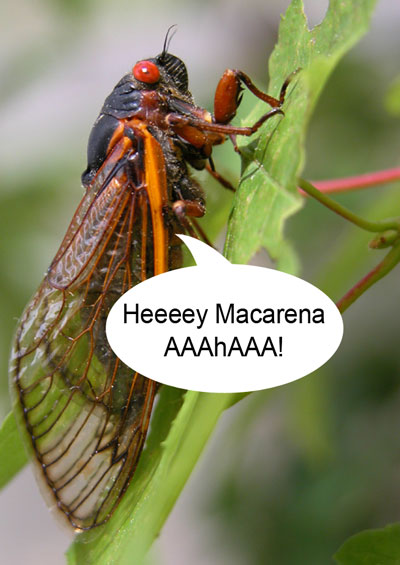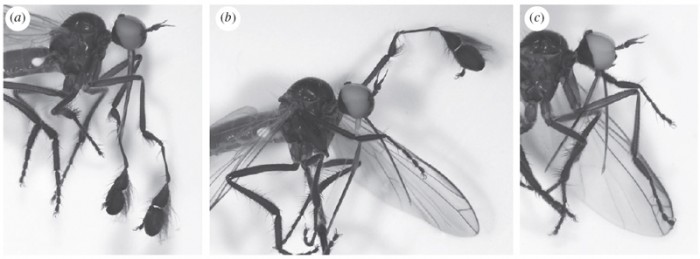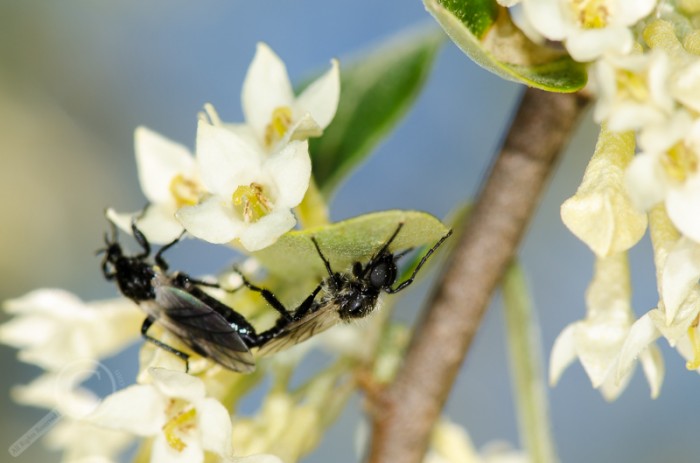
March flies (Bibionidae; Bibio albipennis) pollinating both flowers and one another.
When it comes to pollination ecology research, bees are their own knees. Along with butterflies, birds, and bats, bees reign supreme as the queens of pollinator studies, with huge amounts of money and time spent each year trying to understand everything about their biology, from how they choose which flowers to visit, to the structure of their societies, and of course, why some species seem to be in decline. While some flies (like flower flies — family Syrphidae) are beginning to break into the hive of pollination research, bees so dominate the pollination ecology landscape that suggesting alternative groups, like other flies, may also be important pollinators can result in quizzical looks, derisive scoffs, and even disbelief at results that run counter to popular thinking.
The latter is exactly what happened when Dr. Katy Orford submitted a paper from her PhD that showed flies play a major role in grasslands pollination; the editor rejected it due to a lack of literature supporting her Dipterous conclusions. So, Orford set out to do what no one had done to this point: show beyond a shadow of a doubt that flies are important, and overlooked, pollinators.
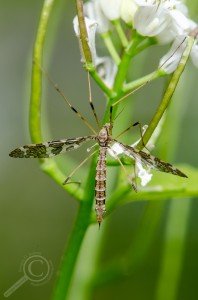
Crane fly (Tipulidae) hanging out among the flowers.
Orford began by gathering and assembling previously published datasets that looked at the connections between pollinators and plants across the UK, specifically datasets that looked at plant-pollinator-visitation networks (what insects visit which plants based on observations) and pollen-transport networks (how many grains of each kind of pollen was found on each insect’s body). Orford immediately found that few studies had actually looked at these metrics for entire insect communities rather than just targeted groups like bees, but she ended up with a dataset spanning both natural and agricultural ecosystems that included over 9,000 insect specimens, 520 pollinator species, and 261 species of plants.
With her dataset in hand, Orford had four questions she wanted answered: how specialized are flies with regards to the plants they pollinate; how prevalent are dipteran pollinators in agriculture and how much pollen are they carrying; and most importantly, how do flies stack up against bees, butterflies, and beetles when it comes to transporting pollen?
Flies, it turns out, aren’t overly picky about what flowers they’ll visit and feed from. While flower flies visited a broader spectrum of the floral smorgasbord available in the study plots, they were found to be no better at transporting specific pollen species than the other fly families. This isn’t to say that there aren’t any specialized relationships between plants and flies (cacao and biting midges in the genus Forcipomyia being the most famous example of flowers and flies being in league with one another, much to our enjoyment), only that in the particular environments Orford examined she found no evidence for specialization among the residents.
When Orford looked at the composition of fly visitors on farms, non-syrphids were not only more speciose than their flower fly cousins, averaging 7 species to 3, respectively, but they also outnumbered them 4 to 1 in the sheer number of individuals. In fact, Orford found that only 3 farms out of the 33 she had data for reported more flower flies than other flies. Not only were non-syrphids more diverse and more abundant, but they also carried more than twice the number of pollen grains on their bodies as flower flies did in agricultural fields. All of this suggests that the role of syrphids in pollination ecology, a topic that has received at least some study at this time, may only be the tip of the iceberg when considering the importance of flies in agricultural pollination.
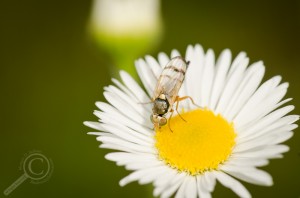
Urophora affinis (Tephritidae)
This is all well and good when deciding which flies are better pollen bearers among themselves, but how do they stack up against the rest of the competition? Do bees really pull their weight in the great pollen wars, or have flies been shouldering the load without us realizing it?
Unsurprisingly, bees are really good at carrying pollen. Not counting the pollen trapped in their specialized storage structures (like the corbicula of Apis mellifera, or the scopa of Megachilidae leaf-cutter bees), Hymenoptera still beat out all the other insect groups when the number of pollen grains on each individual was counted, while flies, butterflies and beetles were all found to be roughly equal in their carrying capacity. This result shouldn’t really come as a surprise, as bees have specialized branched hairs all over their bodies that have evolved to efficiently trap pollen, which is then combed out of the hairs and into their pollen storage structures. So while flies are usually pretty hairy, they’re essentially catching pollen with a comb, rather than the hair net that bees are employing.
But, while each individual bee may carry more pollen than each individual fly, Diptera are much more abundant, at least in agricultural settings. In fact, Orford found that two-thirds of all pollinating insects recorded in her agricultural datasets were flies. That means that when we talk about agricultural pollination ecology, which is predominantly focused on bees currently, we’re a long ways from seeing the complete picture.
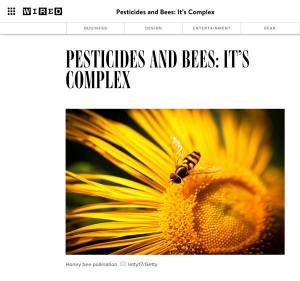
Perhaps Wired’s editors were on to something here. If it looks like a bee, and carries pollen like a bee…
There was one other thing that Dr. Orford discovered, however. When she broke down her pollen-load data beyond just Hymenoptera and Diptera, and started looking at the pollen loads of bees and flies on a finer taxonomic scale, she found that, statistically speaking, flower flies carry just as much pollen on their bodies as European honey bees.
Does this mean flower flies are as effective pollinators as honey bees? It’s too early to say; honey bees may be better at transferring pollen from flower to flower and causing flowers to develop seeds; or they might not be. More research into the pollination efficiency of flies is clearly needed, but the potential implications of this pollen equality are staggering. Orford’s data shows that on farms, flower flies make up about 16% of all flower-visiting insects, while bees, butterflies and beetles together combine to make up only 33% of visitors. It’s very possible that we’ve been attributing a little too much success to those “busy” little bees.
Orford’s work presents another fly in the ointment, so to speak: if bee populations, including honey bees, are indeed declining as has been suggested by several recent papers and hyped by the media and special-interest groups like beekeeping societies, what’s happening with flies? Are they experiencing similar declines as social bees, or are they shielded from the effects of human-trafficked diseases and parasites, along with pesticide accumulation in hives by their solitary and undomesticated lifestyle? Are monocultural agriculture practices and denuded, degraded, and destroyed natural habitats reducing fly diversity in the same way that other pollinators appear to be experiencing? We just don’t know at this point.
And while bees become an increasingly popular talking point and agenda item for politicians, Diptera remain undiscussed. US President Barack Obama in particular has become a champion for bees, with a pollinator garden and bee hotels supposedly being built on the grounds of the White House. Why not monitor and speak up for all of the pollinators, two-winged or four, in President Obama’s backyard as Dr. Orford did?
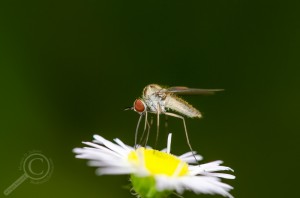
Geron sp. (Bombyliidae)
Well, as she notes in the conclusions of her work, flies aren’t as easy to study as bees are. For one, flies don’t return to a predictable location such as a hive or nest like bees do, which makes observing and experimenting with them considerably more difficult. The other major issue, of course, is taxonomy. There are more than 6 times as many species of fly currently known than there are bees, and those flies are notoriously difficult to identify, even to the proper family in some instances, never mind trying to determine genus or species. While the flower flies have received a great deal of taxonomic attention in the past 50 years, and are generally more easily identified than most groups of flies, the same is not true for the top non-syrphid pollen carriers identified by Dr. Orford: Bombyliidae, Muscidae, and Calliphoridae, all of which pose significant identification and/or taxonomic challenges at the moment.
The solution? From Dr. Orford: “training in dipteran taxonomy should be more available to ecologists. Alternatively, specialist taxonomists should be included in research projects to prevent pollination biologists being deterred from recording Diptera due to identification difficulties”.
I couldn’t agree more.
Dipterists around the world are working hard to make the flies they’ve devoted their careers to more accessible, both through the publication of identification resources, and through the organization of workshops and other educational events. However, as has been shown by Dr. Orford’s work, we should expect a growing demand for keys and other identification tools, along with the people who create them, to usher in a new era of pollination ecology; an era defined by a greater understanding of pollinators of every ilk through collaboration and communication between Diptera taxonomists and pollination ecologists.
As for Dr. Orford, since successfully defending her PhD last fall, she’s taken a position working with government policy in the UK, providing an important voice for flies alongside those advocating for more “traditional” pollinators. As for her paper on grasslands pollination, whose initial rejection inspired this long-overdue look into the flowery lives of flies, now that she’s shown the pollination hivemind the importance of Diptera, she hopes her work will fly through the peer-review process.
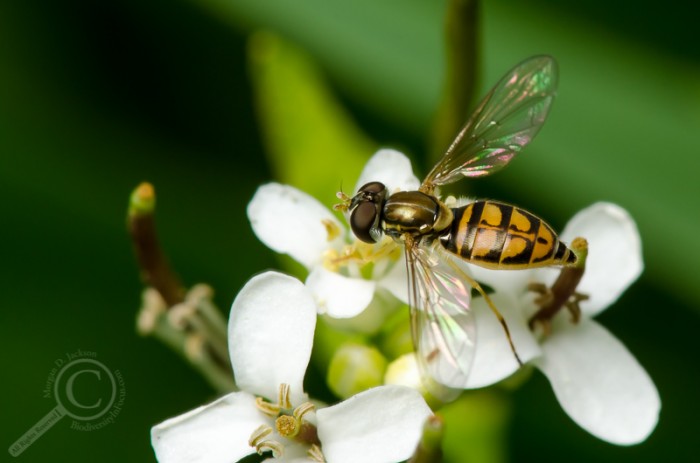
Toxomerus marginatus (Syrphidae)
Orford K.A. & J. Memmott (2015). The forgotten flies: the importance of non-syrphid Diptera as pollinators, Proceedings of the Royal Society B: Biological Sciences, 282 (1805) 20142934-20142934. DOI: http://dx.doi.org/10.1098/rspb.2014.2934

